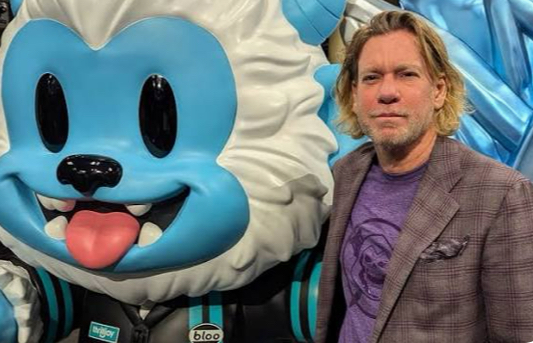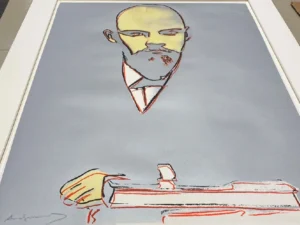Brian Mariotti’s launch of Thrilljoy, following his transformative impression as CEO of Funko, signals a bold new chapter in the world of collectibles. Known for making Funko a household name by pushing the boundaries of collectible culture with vinyl Pop! figures, Mariotti’s venture into Thrilljoy appears set to capture similar excitement, yet with a different, perhaps more refined, twist. This move suggests an ambition not just to replicate the pop culture-infused success of Funko but to innovate the collectibles market with a fresh, discerning approach that speaks to both nostalgia and novelty.
Under Mariotti’s leadership, Funko’s growth was meteoric, blending nostalgia with accessibility. By partnering with virtually every major pop culture brand—from Star Wars to Marvel to Harry Potter—Funko became a universal collector’s item. The brand was able to tap into the zeitgeist and connect across generations, transcending its initial niche market to capture mainstream retail space. Despite its success, however, Funko began to suffer from saturation; production was prolific, and the market grew flooded with Pop! figures that no longer felt exclusive or exciting. By stepping back, Mariotti left Funko at a crossroads, as collectors began to crave something more unique and curated.
Thrilljoy, by contrast, emerges as a reaction against this over-saturation. Mariotti’s aim, reportedly, is to redefine what collectible toys can be, focusing on artistry, limited releases, and perhaps more high-end collaborations that offer a breath of fresh air in the market. This pivot not only highlights Mariotti’s adaptability but also acknowledges the growing sophistication of today’s collector, who might appreciate quality and uniqueness over sheer quantity. It reflects an awareness that the collectibles space has evolved, and so too must the products that serve it.
At the heart of Thrilljoy lies an opportunity to harness an already established passion among collectors while introducing innovations that re-engage the audience. The company’s initial branding hints at a balance between whimsy and sophistication, aiming to captivate a segment that may have outgrown the ubiquitous Pop! figure but still feels the allure of memorabilia. The key question, however, will be how Thrilljoy differentiates itself from both mainstream brands like Funko and boutique collectible companies that also pursue quality and exclusivity.
The collectibles market has become highly competitive, with companies like Super7 and Mondo (another high-end collectible brand acquired by Funko but retaining its unique style) already dominating certain niche spaces. While Thrilljoy could carve out its niche, it must do so with a level of innovation and brand clarity that differentiates it from established players. If Mariotti can succeed in establishing a distinctive visual language or brand personality for Thrilljoy, it may quickly resonate with collectors.
In many ways, Thrilljoy could signal a shift toward a more refined collectible that draws not only on pop culture but also on elements of art and design that appeal to a collector’s sense of aesthetics and rarity. This idea aligns with broader trends in the collectibles industry, where limited releases, premium packaging, and high-quality materials are gaining traction. Collectors today seek items that feel special and unique—pieces that serve as conversation starters or symbols of personal taste rather than generic, mass-produced products.
Mariotti’s knack for recognizing and responding to shifts in pop culture may be what makes Thrilljoy stand out. For example, Funko’s success was largely due to its accessibility, but it often walked a fine line between collectibles and toys, blurring the boundaries that Thrilljoy may wish to keep more distinct. By focusing on curated collections, artistic collaborations, or limited edition runs, Thrilljoy could build a portfolio that feels more mature, less commercialized, and capable of holding value over time. This approach might also allow for partnerships with artists or brands that might hesitate to mass-produce their imagery.
Launching in a competitive market carries inherent risks, especially given the state of the global economy and the discretionary nature of collectible spending. While collectibles have remained resilient even in economic downturns, there’s no guarantee that Thrilljoy’s premium positioning will resonate across demographics. Furthermore, there’s a fine line between creating exclusivity and alienating potential buyers. Mariotti’s challenge will be to strike a balance between accessibility and luxury, ensuring that Thrilljoy is aspirational without being off-puttingly elitist.
Additionally, Mariotti faces the challenge of breaking away from Funko’s shadow. Funko’s massive fanbase, although loyal to the brand, also has high expectations of Mariotti, and any resemblance to his past ventures could lead to disappointment. For Thrilljoy to thrive, Mariotti will need to establish a brand voice and product line that feels fresh, innovative, and distinctly different from Funko. If Thrilljoy is too similar, it may fail to attract a new audience or re-engage the original Funko fans who may have moved on.
If successful, Thrilljoy could usher in a new era for the collectibles market, one that prioritizes craftsmanship, storytelling, and brand narrative over sheer volume. Mariotti’s departure from the mass-market approach of Funko could signify a turning point, where collectibles become more akin to fine art than novelty items. This direction would align with the growing interest in products that are not only rare but have intrinsic artistic or cultural value.
Collectors today value stories as much as objects; they seek items that connect to personal narratives, childhood memories, or shared cultural moments. If Thrilljoy manages to infuse storytelling and artistry into each release, it could create a fanbase that views these items not just as possessions but as emotional investments. Mariotti’s expertise in this arena, particularly his instinct for spotting cultural trends and understanding fan psychology, may prove invaluable in turning Thrilljoy into a collectible brand that is both covetable and culturally relevant.
Thrilljoy’s success will ultimately depend on Mariotti’s ability to tap into the same cultural currents that made Funko a household name. However, he must also recognize that the collector landscape has changed. Today’s collectors are savvier, with many gravitating toward items that hold intrinsic value and have the potential to appreciate. If Thrilljoy can capture this trend while appealing to a diverse range of collectors—from fans of pop culture to art enthusiasts—Mariotti may find himself leading a second collectible revolution.
In the end, Thrilljoy’s greatest challenge will be to build a brand identity that feels distinct and appealing in an increasingly saturated market. Mariotti’s track record suggests he is up to the task, but the journey from Funko to Thrilljoy will undoubtedly require innovation, flexibility, and a deep understanding of what collectors truly value today. If successful, Thrilljoy could redefine the boundaries of collectible culture, making it possible for even the most casual collector to find a piece that speaks to their identity, tastes, and aspirations.
No comments yet.







